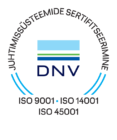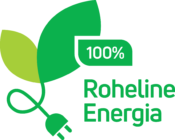Nordecon installed a pre-built 295-ton concrete railway overpass during a 31-hour railway transportation breakdown as part of the construction of the Tõrvandi junction in Tartu. The deck was hoisted by one of the biggest mobile cranes in the world, specially delivered for this purpose.
Video: https://www.youtube.com/watch?v=6C3M0Ww_T4A&feature=youtu.be
“With a hoist like this, it is very important to carefully consider the preparatory works, safety, and well-planned and venturous engineering, as it is not possible to interrupt railway transportation for a very long time – this is why our building site team, partners as well as the ordering party deserve all the credit for great cooperation,” said Erkki Suurorg, Member of Board at Nordecon. “Three months of preparatory works and planning were finalised at the implementation stage within 31 hours with more than fifty building engineers and specialists simultaneously involved.”
Erkki Suurorg explains that during this time, the railway was deconstructed, the concrete piles constructed in May were dug out, support structures were installed, the deck plate was hoisted to its position, the ends of the overpass were backfilled, and the track bed and permanent way were restored. “We used a similar express reconstruction method also last year in Tallinn, at the Topi intersection construction in Tallinn, although a pushing technique was used there to install the overpass and the timeframe was 48 hours.” (Watch the video here)
One of the world’s largest mobile cranes, Liebherr LG1750 with a lifting capacity of 750 tons and boom length of 48 metres for this site (max. boom length 153 m), was used for hoisting the 295-ton railway overpass. In addition to the hefty crane, nine excavators, eight dumpers, two smaller cranes, a ballast tamper, and a locomotive with hopper cars were involved.
Although the road construction works on Tõrvandi-Ülenurme transport link continue into October, the installation of the railway crossing completed a vital and the most complicated part of the construction of the Tõrvandi junction.
In the second half of July, some changes in traffic control are introduced on the fifth construction area of Tartu’s western bypass, the most noteworthy of which is the implementation of the Lennujaama crossover. In relation to this, the traffic on the Tallinn-Tartu-Võru-Luhamaa highway starting from Ülenurme-Külitse road is redirected from the old route to the new section, across the Lennujaama crossover. The right turn towards Võru will be removed from the old Ülenurme-Külitse road junction; the drivers approaching from Tõrvandi can head towards Võru from the new roundabout of Külitse and Tehnopark road, using the newly finished Lennujaama road.
The construction works of Tartu’s western bypass built by AS Nordecon started with the planning phase in August 2014; the duration of the works including planning is an estimated 15 months. The project was ordered by the Estonian Road Administration and is co-financed by the EU’s Cohesion Fund.









